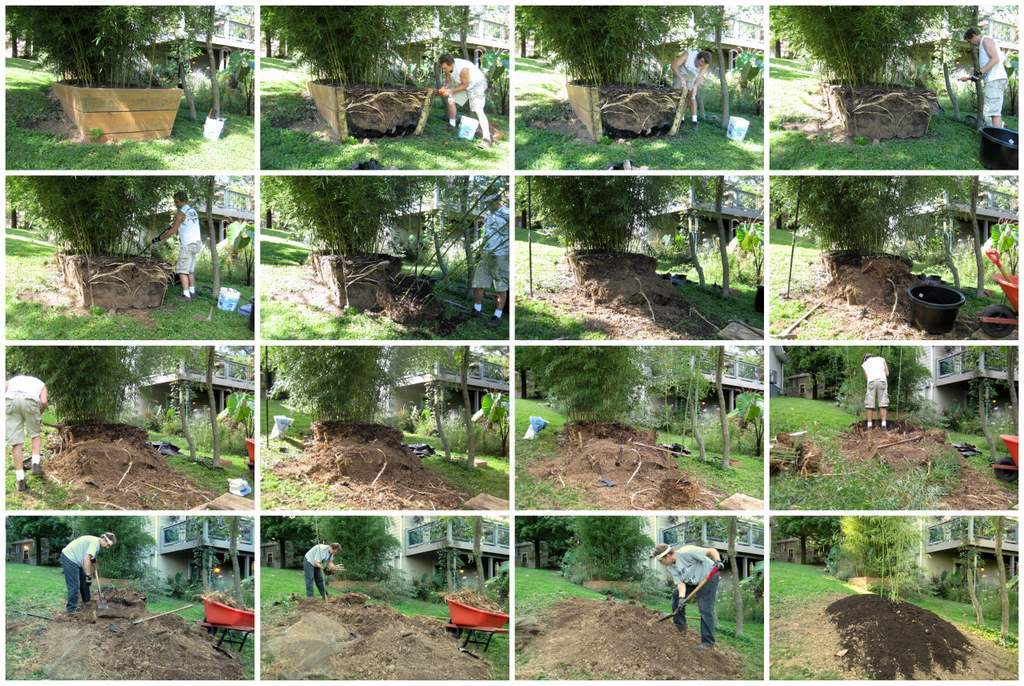Bamboo removal timelapse video
This past week I've posted a few times about a big bamboo removal and planting project (there's really no such thing as a small bamboo removal project). I mentioned that I would be posting a timelapse video of the entire project "someday soon".
After much experimenting, "someday" is here -- today is the day!
If you haven't read my posts about this project yet, part 1 is here, part 2 is here, and part 3 is here.
With that out of the way, here's the video (HD available and recommended):
This video isn't perfect, and the process was more work that I wanted, but here's how I created this one.
First, I used my small Canon point-and-shoot camera (SD1000) on a tripod to take the photos. The great thing about compact Canon cameras is that there is a free software product called CHDK -- Canon Hack Developer's Kit -- that replaces the camera's "firmware" (the software that operates it) with a version that includes many more features.
One of these added features is scripting, and by loading the right script the camera can be setup to take photos at a specific time interval. That's what I used in my camera for this project, and I set the interval to be about 1 minute. (I also used this when taking photos from the top of a pole.)
Then I set the camera up on a tripod, started it up, made sure it was taking photos, and got to work.
Since I worked over several days, I marked the tripod location with some bamboo stakes, but I still wasn't able to get the camera positioned exactly the same every day. Plus lighting conditions changed each day (sunny, cloudy, afternoon, dusk) which changed the way each photo looked. (The result is that there is some flickering of the movie, and the camera viewpoint changes every once in a while.)
I then used Google Picasa software to create a movie from these images, but the longest time per image I could get under the "timelapse" setting was 1/6 of a second (or 6 frames per second), which was a little too fast for me. There was no way to make it slower, and if I used a different transition type (not "timelapse"), then the fastest I could get was 1 frame per second, which was too slow. I really wanted 2 frames per second, but couldn't get it.
So I had to duplicate each frame, resulting in 3 frames per second. Not quite what I wanted, but not too bad. I suppose I could have used other tools to create the movie, but I really like simple solutions, and Picasa is pretty good for that.
As you can see toward the end of the video (between planting and planted) there is a big gap in the coverage. The camera's memory card was full and I didn't notice, so I missed several images. I was extremely annoyed about that, but learned another valuable lesson (to go along with the painful "don't stand up digging bar near camera" one).
Whether you are a bamboo person or not, I hope you enjoy this timelapse video and can overlook any technical issues. I'll be doing more timelapse soon -- maybe as soon as tomorrow -- so hopefully I'll get better at it. It's nice having a second camera taking an "overview" shot of garden projects, and being able to use its images to create timelapse movies is an extra cool bonus.




